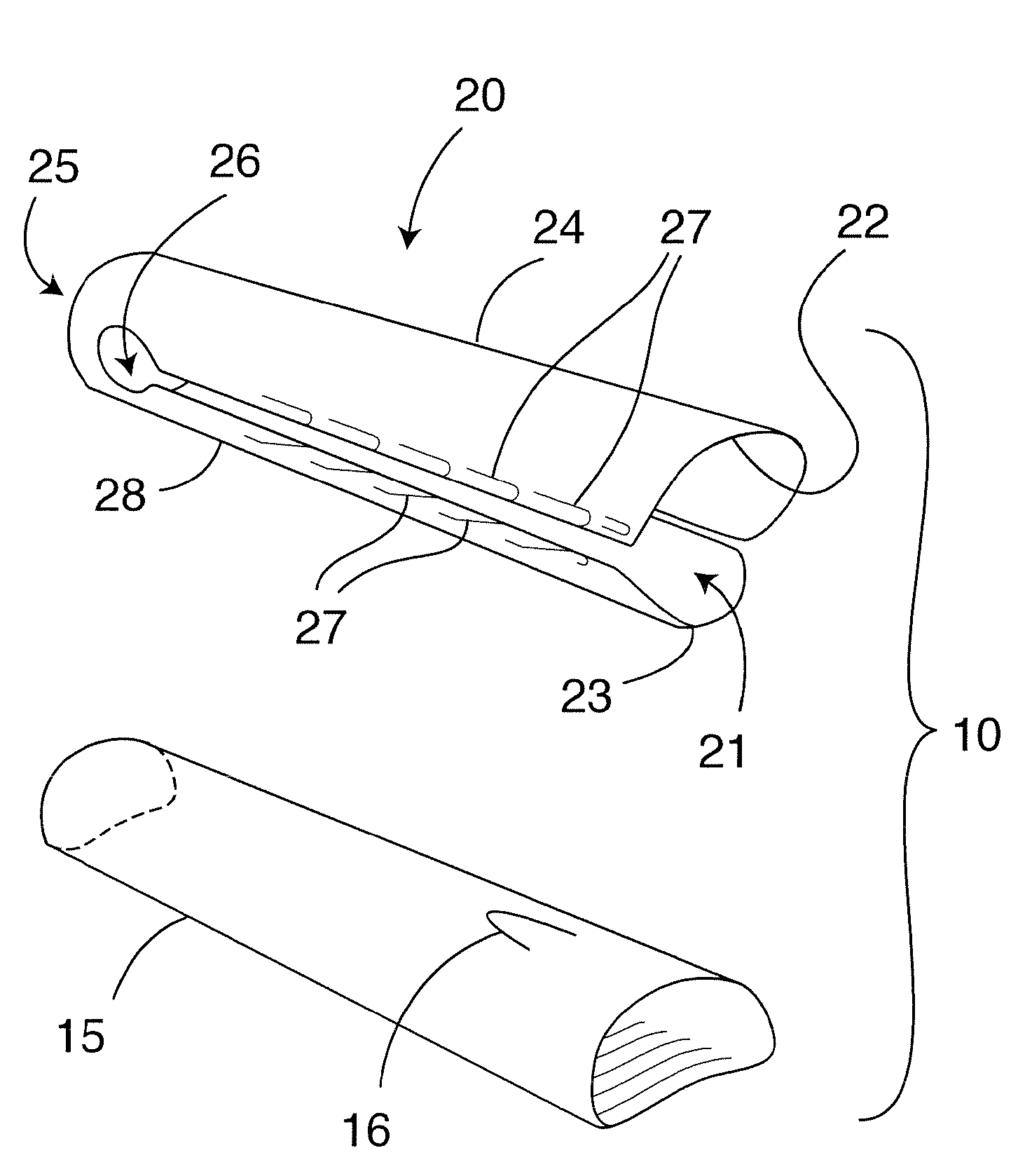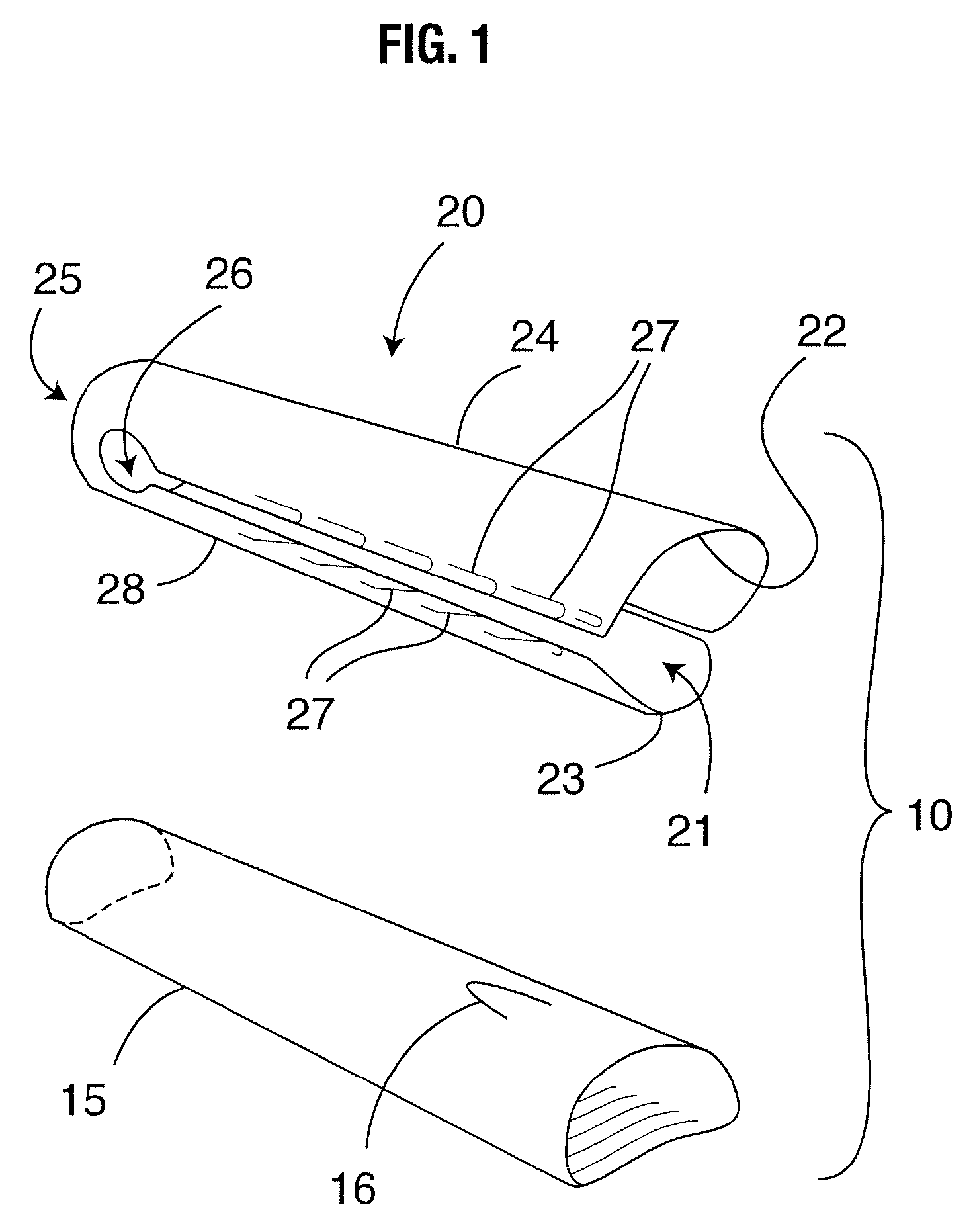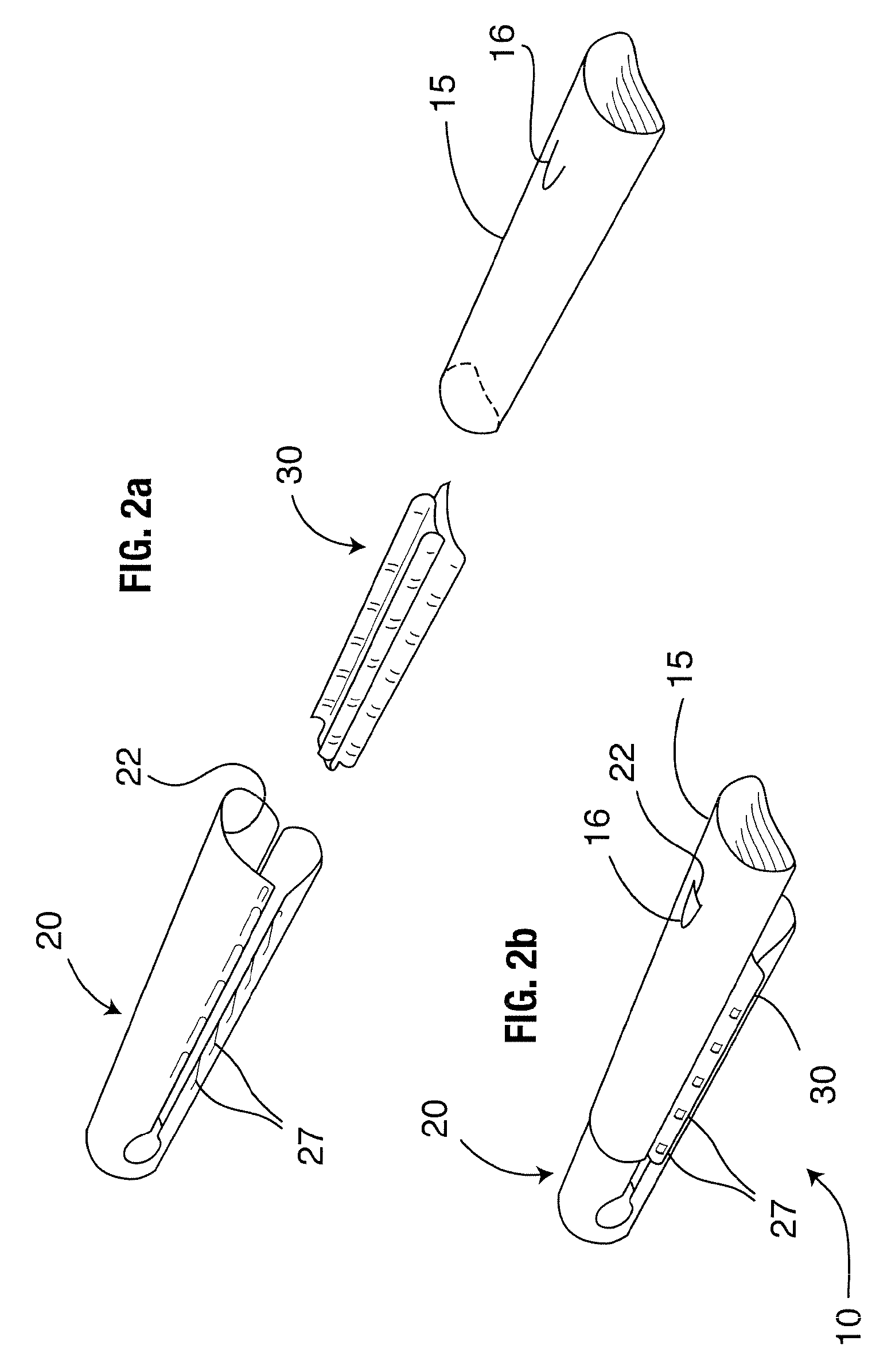Surgical buttress assemblies and methods of uses thereof
a technology of buttresses and parts, applied in the direction of surgical staples, manufacturing tools, surgery, etc., can solve the problems of post-operative bleeding, complex loading and securing processes, and the imposition of stretching tension and stress on tissue sections
- Summary
- Abstract
- Description
- Claims
- Application Information
AI Technical Summary
Benefits of technology
Problems solved by technology
Method used
Image
Examples
Embodiment Construction
[0036]An exemplary preferred embodiment of a surgical buttress-dispensing assembly of the present invention is shown in accompanying FIGS. 1-4 and is generally referred to by the numeral 10. The surgical buttress-dispensing assembly 10 comprises a cartridge 20 and a carrier 15. The cartridge 20 is generally elongate and cylindrically shaped with an anterior end 21 and a posterior end 25. An aperture 26 is provided approximate the posterior end 25 of the cartridge 20. Two opposing channels bisecting the cartridge 20, extend forward from the aperture 26 through to the anterior end 25 of the cartridge 20 thereby providing an upper half 24 separated from the lower half 28 of the cartridge 20 anterior of the aperture 26. The upper half 24 terminates at leading edge 22 while the lower half 28 terminates at leading edge 23. The opposing side edges of the upper and lower halves 24, 28 are preferably integrally provided with forward-facing tabs 27 configured to communicate with and engage th...
PUM
| Property | Measurement | Unit |
|---|---|---|
| biocompatible | aaaaa | aaaaa |
| stretching tension | aaaaa | aaaaa |
| stress | aaaaa | aaaaa |
Abstract
Description
Claims
Application Information
 Login to View More
Login to View More - R&D
- Intellectual Property
- Life Sciences
- Materials
- Tech Scout
- Unparalleled Data Quality
- Higher Quality Content
- 60% Fewer Hallucinations
Browse by: Latest US Patents, China's latest patents, Technical Efficacy Thesaurus, Application Domain, Technology Topic, Popular Technical Reports.
© 2025 PatSnap. All rights reserved.Legal|Privacy policy|Modern Slavery Act Transparency Statement|Sitemap|About US| Contact US: help@patsnap.com



